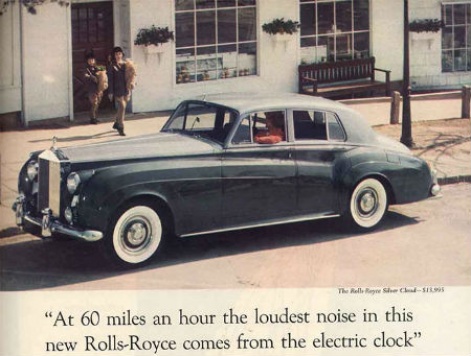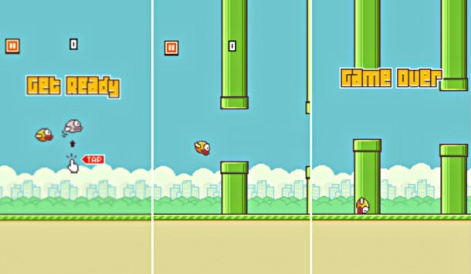Torulf Jernström is CEO of Finnish developer Tribeflame.
His blog is Pocket Philosopher.
You can read all his weekly PocketGamer.biz columns here.
It often strikes me that creative businesses have a lot in common.
It's likely the clash of commercial demands and artistic demands will lead to similar situations.
Recently, I wrote about what games can learn from storytelling in movies, so let's expand a bit on that and have a look at several other "commercial arts".
One thing that we will find across movies, music, games, books and ads (advertising counts as one of these arts!), is a tug of war between creative and analytics.
(The same might apply to architecture, design, painting and sculptures as well, I haven't checked.)
For all of them, there is one faction arguing for making decisions based on cool data, while another faction ridicules them as unimaginative robots and praise creativity instead of conformity.
The Ogilvy view
Let's take advertising as our first example.
One classic book on the art of selling stuff is Ogilvy on Advertising, where Ogilvy (founder of one of the largest ad companies in the world) explains how different ads work statistically.
Indeed, PocketGamer.biz has an article suggesting the 8 pieces of advice advertising genius David Ogilvy would give F2P marketeers.

"People read headlines 5 times as often as they read the body. People remember ads with news 22% more than ads without news."
He also states: "If you are lucky enough to write a good advertisement, repeat it until it stops selling."
If you are lucky enough to write a good advertisement, repeat it until it stops selling.
On the other hand, you have e.g. Luke Sullivan's Hey, Whipple, Squeeze This, arguing for the creative side.
The name of the book comes from an effective, but annoying ad from the 1970s, where Mr Whipple was selling toilet paper. That ad ran for a long time, as it just kept selling - exactly as Mr Ogilvy suggested.
As Sullivan writes: "In 1975, a survey listed Whipple's as the second-most-recognized face in America, right behind Richard Nixon… To those who defend the campaign based on sales, I ask, would you also spit on the table to get my attention? It would work, but would you?"
Hero's Journey meet Jung
Ads are an interesting study that in a way that is similar to games. Another media I've already written about is movies.
There you can find long debates for and against the formulaic script of "The Hero's Journey" with Jungian archetypes on top.
Or, have a look at how The Economist analyses movies. They give a great formula for making a hit movie - but also end with the statement "But do it for the money, not the plaudits: such a film would have just a one-in-500 chance of carrying off an Oscar for Best Picture."
For music, I believe making a Billboard Top 100 hit has a lot of similarities with making a App Store Top 100 grossing hit.
A team making mobile games can still be similar in size to the teams making billboard hits.
And in both cases, the numbers guys churning out polished, but formulaic content will more often win the chart positions - with the occasional artistic rebel breaking all the rules and succeeding in spite (or because) of it.
Flappy Bird. Baby Bird.

The Swedish music producer Max Martin has the best track record in modern times. 54 of his songs have hit the Billboard top 10 chart positions.
You really want to have read here to see how he does it.
Value of entertainment
Let's end this with an interesting comparison: what is the price of entertainment per minute for the different art forms?
Spotify claims to pay about $0.007 (0.7 cents) to the artist each time someone listens to a song.
A good mobile game would follow The Devil's Rule of 666, and make 10 cents ARPDAU.
With 3.5 minute songs, that's 1 cent every 5 minutes or 0.2 cents per minute.
A good mobile game would follow The Devil's Rule of 666, and make about 10 cents Average Revenue per Daily Active User (ARPDAU).
As each player is then spending 6 times 6 minutes, or 36 minutes per day in the game, it comes down to 10/36 = 0.28 cents per minute. That's less than 50% difference from what music pays per minute!!
Of course, not all games will have 10 cents in ARPDAU (believe me, I've made games with way less!), but then again, not all games will hit the 666 rule either.
Less successful games not only have lower ARPDAU - they are also played less minutes per day.
The Leonardo DiCapri affect
Movies and premium games still manage to ask for a much higher price per minute of entertainment provided.
Apparently, the average price for a movie ticket last year in the US was $8.43. Let's say the average movie is 2 hours long.
That would make about 7 cents per minute - or about 25 times what mobile games cost.

A premium game is similar.
It might cost $50 for some 10 hours of entertainment, which comes down to about 8 cents per minute - similar to movies, and much, much higher than mobile games.
Why do premium games and movies succeed in charging so much higher prices for their entertainment compared to music and mobile games?
Of course, the variation is immense for premium games. Some people might play them a lot longer, and thus get a much lower cost per minute - but a lot of people also pay for premium games that they end up playing way less than 10 hours.
Why do premium games and movies succeed in charging so much higher prices for their entertainment compared to music and mobile games?
I would suggest two reasons: production costs for movies and triple-A games are higher per minute of entertainment provided.
A 2 hour blockbuster movie will likely cost more to make than 35 music singles (also about 2 hours).
Also, they require more focus from the consumer.
Both mobile games and music are something that people on the side, with less than their full attention. Playing a match-3 game while watching TV, or listening to music while working.
In contrast, movies and triple console games are immersive and will demand your full attention during several hours. They're a more intense form of entertainment, and thus the price can also be more intense.
P.S.
According to Netflix's quarterly report, their customers spent an average of 568 hours watching the service in 2015.
That would cost the customers 12 * $7.99 or 0.28 cents per minute - exactly the same as for mobile games!





















